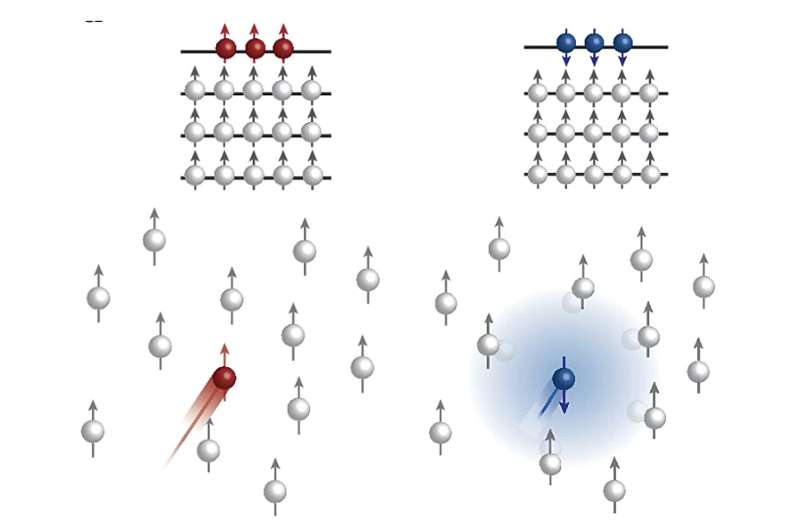
Researchers from Columbia University and the National High Magnetic Field Laboratory have introduced a novel mechanism that enables spin-selective transport of charge carriers in tungsten diselenide (WSe2), a two-dimensional material. This breakthrough was detailed in a paper published in Nature Physics on July 14, 2025. The findings could significantly advance the development of compact and energy-efficient spintronic devices, which utilize both electronic charge and spin to enhance performance.
Spintronic devices are considered a promising evolution in electronics as they leverage the intrinsic spin of electrons, akin to a tiny compass that can point either ‘up’ or ‘down.’ According to En-Min Shih, the first author of the study, “Spin lies at the heart of magnetism and plays a crucial role in many technologies.” For instance, data in hard disk drives is stored based on the orientation of magnetization, allowing for information retrieval based on the alignment of spins.
Understanding Spin-Selective Transport
The core of the researchers’ inquiry was to determine if spin-selective transport could be achieved using a single, non-magnetic material, rather than requiring complex structures composed of multiple materials. Cory Dean, the lead principal investigator, explained that this approach aims to simplify the manufacturing process while enhancing device efficiency.
In their experiments, the team focused on WSe2, noted for its atomically thin structure. Unlike graphene, WSe2 exhibits a significant energy split between its spin ‘up’ and ‘down’ levels when subjected to an external magnetic field. They conducted transport measurements under high magnetic fields, leading to the identification of discrete energy levels, referred to as Landau levels. These levels are characteristic of two-dimensional materials in strong magnetic environments.
Notably, WSe2 displayed a unique behavior where multiple Landau levels could exhibit the same spin orientation before alternating to the opposite spin state. Qianhui Shi, a co-first author, remarked on the implications of these findings for understanding spin dynamics within the material.
Implications for Future Spintronic Devices
The researchers discovered a marked difference in the electrical conductivity of WSe2 depending on the spin orientation of the charge carriers. When the carriers matched the majority spin group, their movement was largely unhindered, resulting in high conductivity. Conversely, when in the minority spin group, their motion was suppressed, leading to dramatically reduced conductivity, which can effectively create an ‘off’ state.
“What we observed is not merely a minor effect,” Shih added. “Under optimal conditions, this can result in a scenario where the low conductance state shows virtually no conductivity.” This behavior presents a promising avenue for achieving spin-selective transport in future devices.
The study further proposes that the observed spin-selective transport could stem from the interactions between mobile carriers and the background of filled electronic states. The differing spins influence the strength of Coulomb interactions, ultimately affecting carrier mobility.
This new mechanism offers distinct advantages over traditional methods of achieving spin-selective transport, which often rely on spatially separated magnetic domains. Instead, the team’s approach allows for spin filtering within a single material, driven by the interaction between free and localized spins in energy-separated bands.
Looking ahead, the researchers plan to deepen their investigation into the identified mechanism. Shi noted the potential to explore the effects of moiré structures—formed by slight twists in layered WSe2—which may create conditions conducive to spin-selective transport without the need for an external magnetic field.
This innovative work by Shih, Dean, Shi, and their colleagues marks a significant step toward the realization of efficient and tunable spintronic devices. As the field progresses, the ability to manipulate spin properties through optical methods rather than magnetic fields could open new technological pathways.
The findings underscore the ongoing quest in materials science and quantum physics to harness the unique properties of two-dimensional materials for next-generation technologies.







